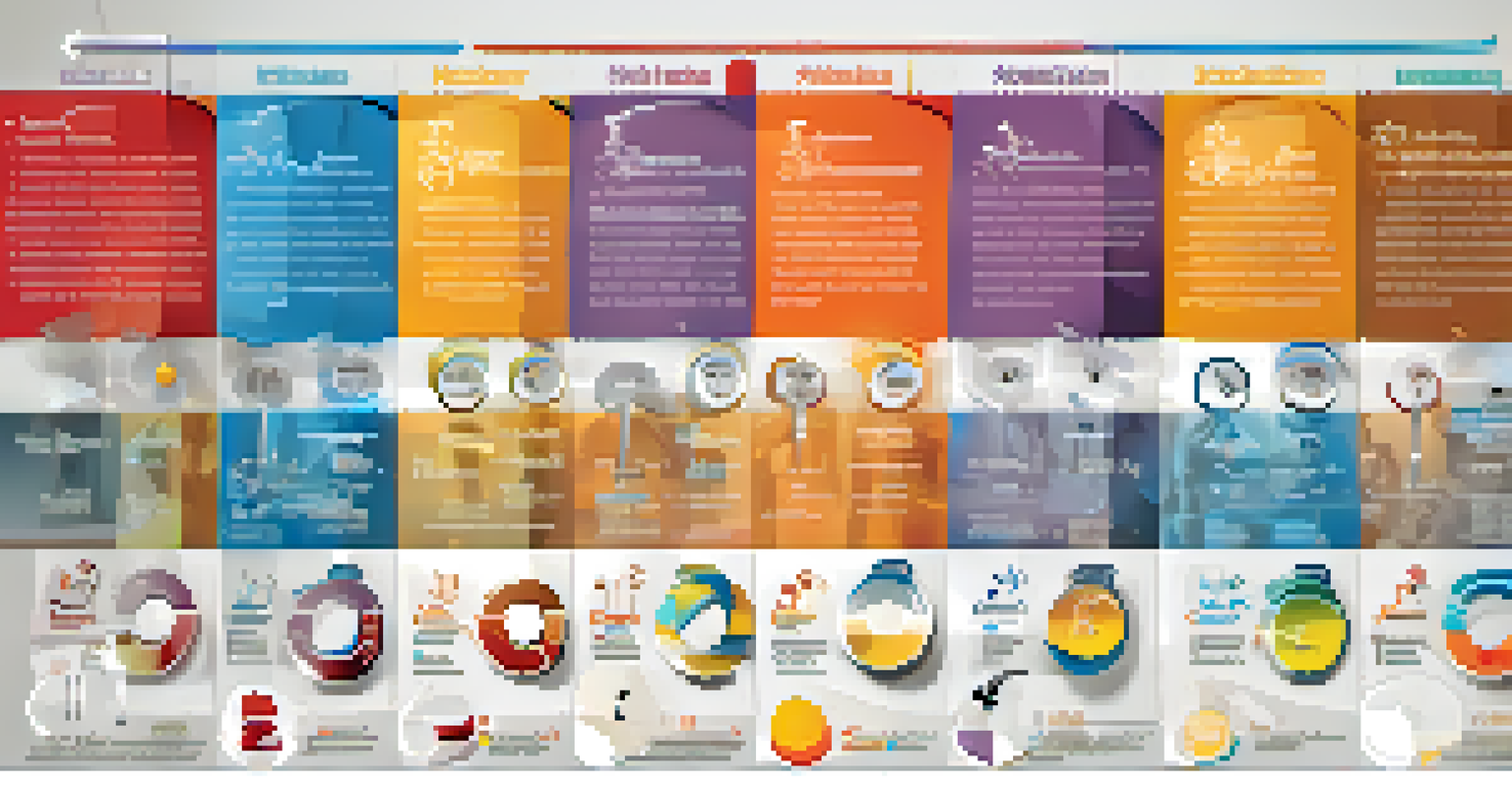Periodization Strategies for Customized Bodybuilding Gains

Understanding Periodization: The Foundation of Training
Periodization is a strategic approach to training that involves varying your workout intensity and volume over time. This method helps to prevent plateaus and overtraining, ultimately leading to better gains. Think of it like a well-planned road trip; you wouldn't just drive straight without any stops or detours, would you?
The secret of change is to focus all of your energy not on fighting the old, but on building the new.
By organizing your training into distinct phases, periodization allows your muscles to recover and adapt. Each phase is designed with specific goals in mind, whether it's building strength, increasing endurance, or enhancing muscle size. It's like crafting a recipe; you need the right ingredients and timing to create a delicious dish.
Incorporating periodization into your bodybuilding regimen can help you achieve consistent and sustainable results. Just as a gardener tends to their plants through different seasons, a bodybuilder must adjust their training approach to maximize growth and performance.
Macrocycles: The Big Picture of Your Training Plan
At the highest level of periodization, macrocycles represent long-term training plans, often spanning several months to a year. This phase focuses on overall objectives, like preparing for a competition or achieving a certain physique. Visualize a marathon runner; their training isn't just about a single race but about building endurance over an extended period.

Within a macrocycle, you'll typically find several mesocycles, which are shorter training blocks lasting a few weeks to a few months. Each mesocycle has specific goals that contribute to the larger objective. It's similar to breaking a big project into smaller, manageable tasks, making it less overwhelming.
Periodization: Structured Training
Periodization involves organizing workouts into phases to prevent plateaus and promote consistent gains.
Understanding macrocycles helps you to set realistic goals and track progress effectively. By regularly assessing your achievements, you can adjust your training plan to stay on course, much like recalibrating your GPS during a trip.
Mesocycles: Structuring Your Training Blocks
Mesocycles are vital components of periodization, allowing you to focus on specific training goals over a defined period. Typically lasting four to six weeks, these blocks can emphasize hypertrophy, strength, or endurance. Imagine building a house; you need to lay a solid foundation before adding the walls and roof.
Success is the sum of small efforts, repeated day in and day out.
Each mesocycle can have its own unique training style, which keeps your workouts fresh and engaging. For example, you might spend one mesocycle focusing on high-rep, low-weight training for muscle growth, followed by another emphasizing low-rep, high-weight training for strength. This diversity helps to keep you motivated and challenged.
By varying your training within mesocycles, you can prevent mental and physical burnout. It’s like rotating the flavors in your diet; your taste buds and body will thank you for the variety!
Microcycles: Fine-Tuning Your Weekly Workouts
Microcycles are the smallest units of periodization, typically lasting one week. They provide a detailed plan for your daily workouts, ensuring each session aligns with your overall training goals. Think of microcycles as the daily meals that contribute to your health; each one matters in the grand scheme of things.
Within a microcycle, you can vary the intensity and volume of workouts to keep your body adapting. For instance, you might have a high-intensity day followed by a lower-intensity recovery session. This variation helps manage fatigue and allows for optimal performance during key workouts.
Recovery is Essential for Growth
Incorporating recovery and deload weeks is crucial for muscle repair and overall performance enhancement.
Carefully planning your microcycles ensures that you're making daily progress, which adds up over time. Just like tracking your expenses helps you stay within budget, monitoring your workouts helps you stay on track with your fitness goals.
The Importance of Recovery in Periodization
Recovery is a crucial element of periodization that often gets overlooked. It's during recovery that your muscles repair and grow stronger, so incorporating rest days is essential. Imagine a sponge; if you keep squeezing it without letting it dry, it will eventually lose its ability to absorb water.
Incorporating deload weeks—where you reduce training intensity and volume—can prevent burnout and overtraining. These weeks are like a mini-vacation for your muscles, allowing them to recharge and prepare for the next phase of training. It's important to listen to your body and understand when it needs a break.
Prioritizing recovery not only enhances your physical gains but also supports mental well-being. A well-rested body is more motivated and focused, making your training sessions more effective.
Adjusting Your Periodization Plan Based on Progress
One of the key benefits of periodization is its flexibility. As you progress, it’s essential to adjust your training plan to match your evolving goals and capabilities. Think of it like tuning a musical instrument; small adjustments can make a significant difference in the overall performance.
Regularly assessing your progress—whether through tracking weights, body measurements, or personal records—can provide valuable insights. If you're hitting plateaus, it might be time to change your training variables or even reset your focus for the next mesocycle.
Nutrition Complements Training
Aligning your nutrition with training phases maximizes performance and recovery, enhancing bodybuilding results.
Being adaptable in your periodization approach ensures that you continue to make gains and stay engaged with your training. This adaptability is much like navigating a winding road; sometimes you need to change direction to reach your destination.
Combining Nutrition with Periodization for Optimal Gains
Nutrition plays a critical role in maximizing the benefits of your periodization strategy. Tailoring your diet to align with your training phases can enhance performance and recovery. It’s similar to fueling a car; the right fuel helps the engine run efficiently.
During hypertrophy phases, increasing calorie and protein intake can support muscle growth, while during strength phases, focusing on nutrient timing might be more beneficial. Understanding how food affects your performance allows you to optimize your gains effectively.

By integrating nutrition with your periodization plan, you create a holistic approach to bodybuilding. This synergy not only boosts your physical results but also fosters a healthier relationship with food and fitness.